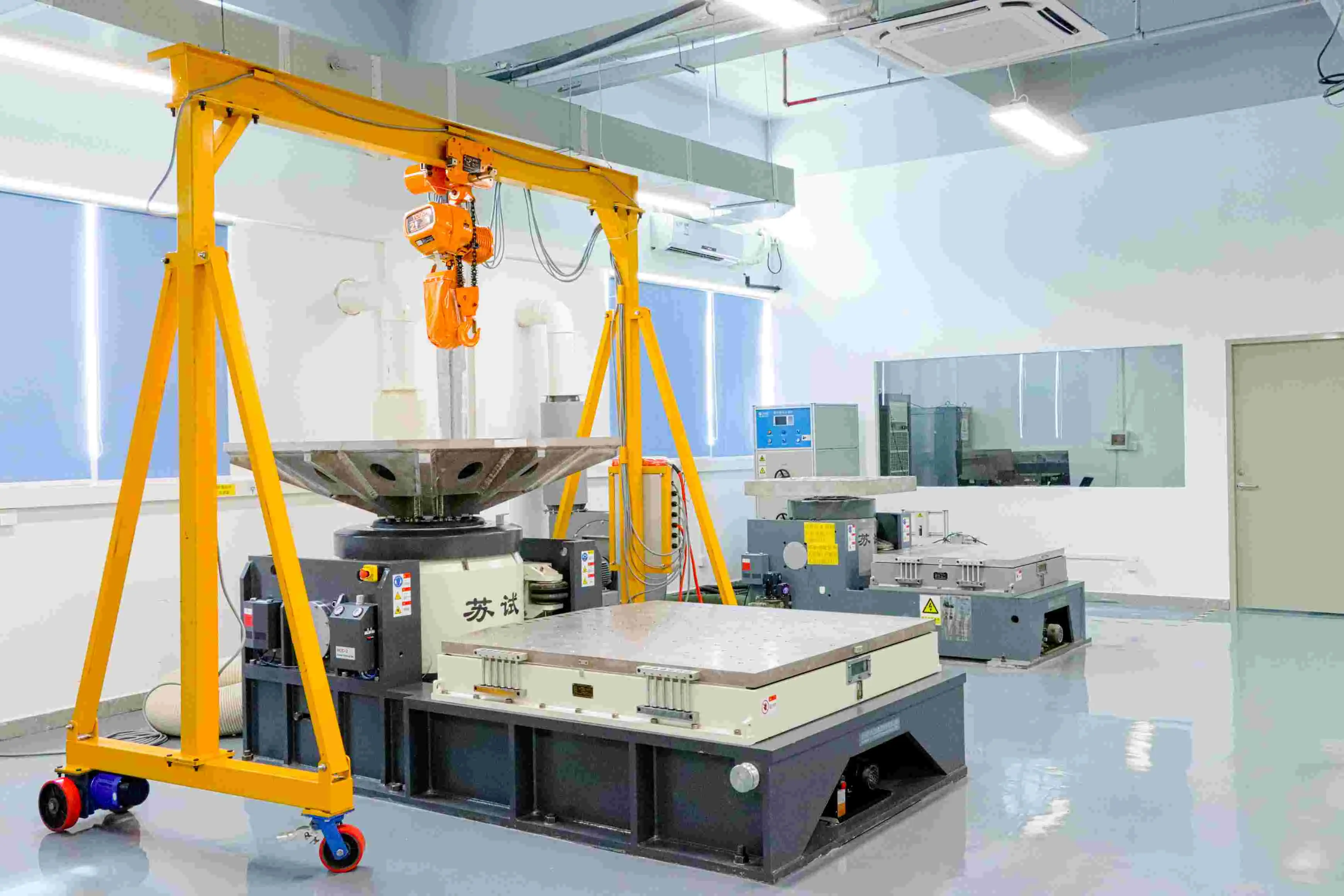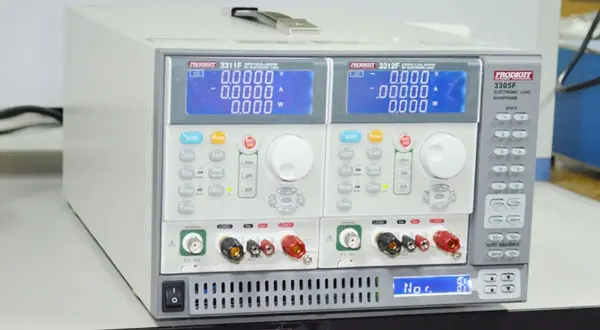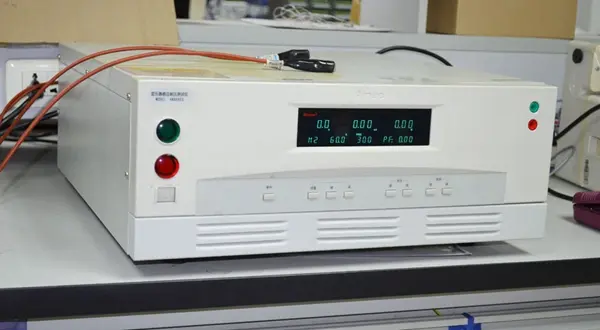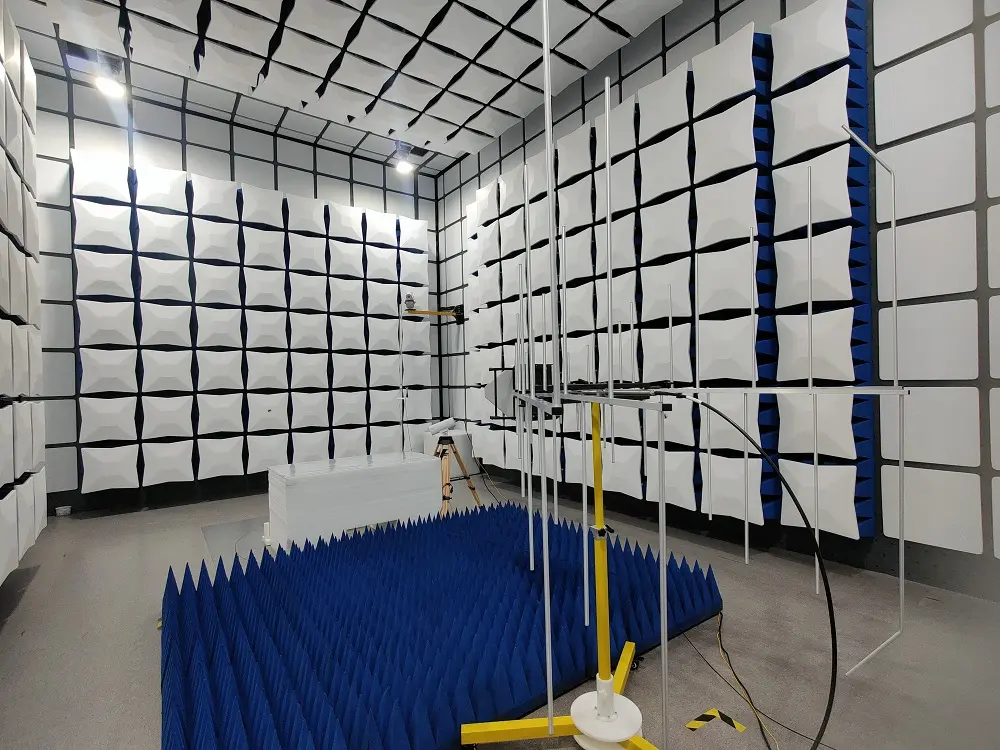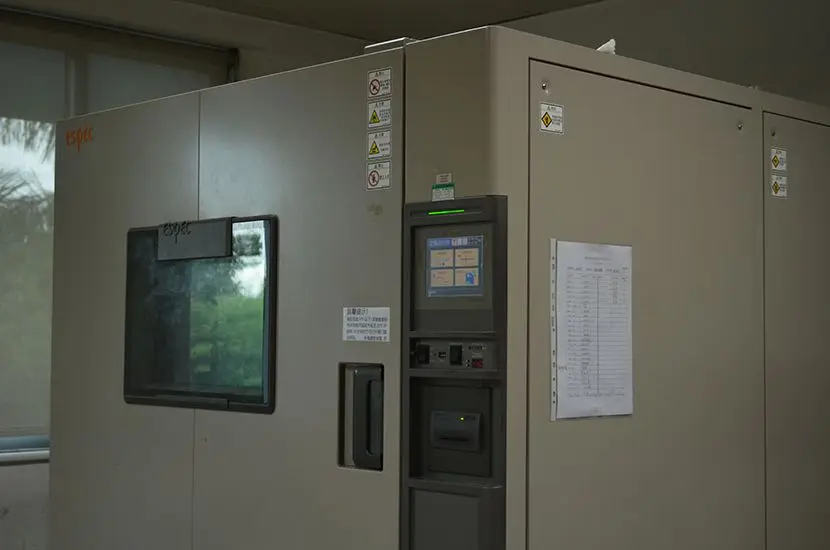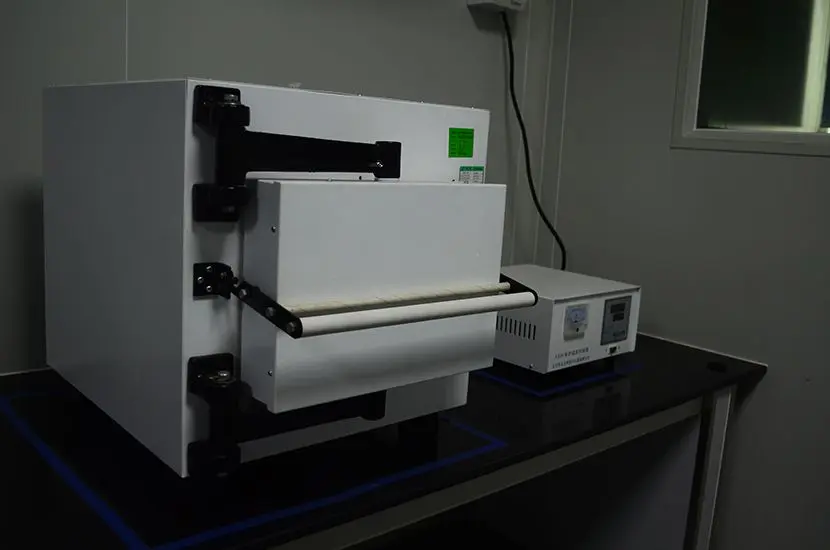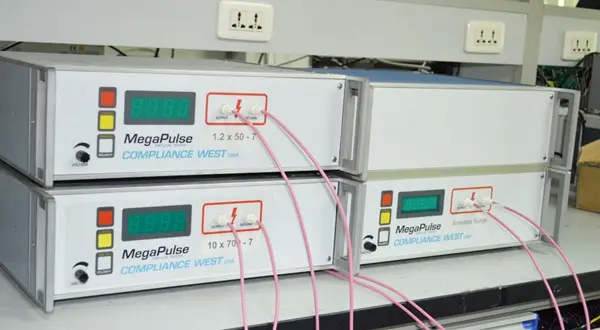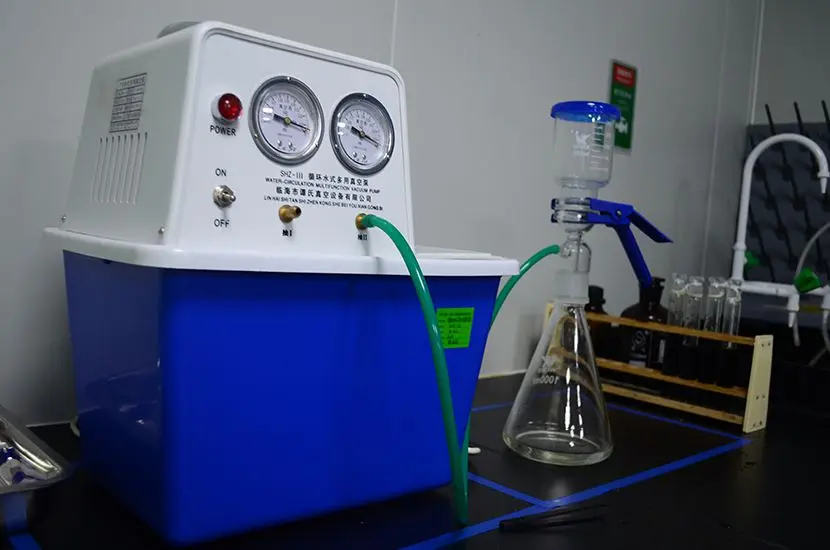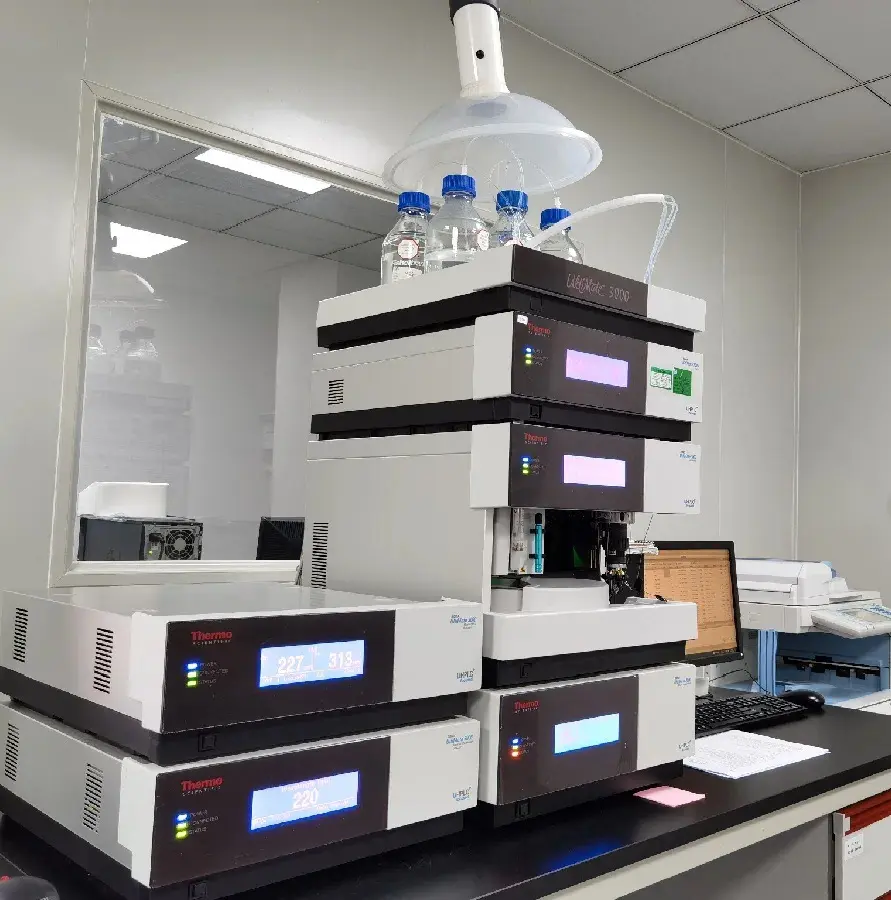Japan's VCCI certification
What is Japan's vcci certification?
VCCI stands for Voluntary Control Council for Interference by Information Technology Equipment. It is the emblem of electromagnetic compatibility certification in Japan, managed by the Voluntary Control Council for Interference by Information Technology Equipment. VCCI certification is voluntary, but information technology products sold in Japan are generally requiRED to undergo VCCI certification.
The VCCI emblem symbolizes the assurance of an information society where people can live comfortably without being troubled by electromagnetic interference.
VCCI is the electromagnetic compatibility certification emblem of Japan, managed by the Voluntary Control Council for Interference by Information Technology Equipment, and evaluates whether information technology products comply with VCCI requirements based on CISPR 22 / CISPR 32. VCCI certification is voluntary, but information technology products sold in Japan are generally required to undergo VCCI certification. Manufacturers must first apply to become members of VCCI before they can use the VCCI emblem. To obtain VCCI recognition, the provided emi test reports must be issued by a testing institution registered and recognized by VCCI.
Basic Information on VCCI Certification:
- Mandatory or Voluntary: Voluntary
- Validity Period of Certificate: Indefinite
- Factory Audit Requirements: None
- Holder Requirements: None
- Application Timeframe: 1-2 weeks
- Technical Information: AC voltage frequency of 100V/200V, 50Hz/60Hz, Plug JIS 8303
Frequency Controlled by VCCI:
Currently controlled frequencies range from 150kHz (2000 meters wavelength) to 6GHz (5 centimeters wavelength), with the possibility of further control of higher frequencies in the future.
VCCI Product Categories:
Applicable product scope:
- MULtimedia Equipment (MME).
VCCI certification is voluntary and applicable to IT information technology equipment. Not all electronic electrical products are suitable for VCCI certification. The A-grade label of the product should indicate compliance with RF radiation provisions, while B-grade products only need to display the basic VCCI emblem symbol.
- Class A devices: Must meet Class A limit requirements. ITE devices other than Class B.
- Class B devices refer to products that must meet Class B limit requirements and are intended for use in residential environments (residential environments refer to environments where broadcasting and television receivers may be used within a range of 10 meters from the information technology equipment, or residential environments where portable devices powered by rechargeable batteries, communication terminal equipment powered by communication networks, personal computers and portable word processors, and peripheral devices connected to them are used; fax machines).
1. Mainframe (supercomputer, server, etc.): desktop computer, notebook, tablet
2. Peripheral terminal equipment: auxiliary storage (storage device), printer, monitor (LCD, CRT monitor, etc.), input/output equipment (including auxiliary storage, printer and monitor), general-purpose terminal (display, typewriter terminal, etc.) , special terminals (POS, medical terminals, financial and insurance use, etc.), other peripherals
3. Transmission equipment: telephone equipment (FAX, PBX, telephone, group telephone system, etc.), network channel terminal equipment (Modem, digital transmission equipment, DSU, terminal adapter, etc.), LAN equipment (hub, repeater, Switching -node, router, etc.), other transmission equipment (telecommunication center switching equipment, etc.), others (digital cameras, Navigator, toys, MP3 players, etc.)
Mainframe ( supercomputer , server, etc. ) | A1 | a1 | |
Personal computer | Desktop calculators, etc. | B1 | b1 |
Notebook type etc. | C1 | c1 | |
Palm type etc. | D1 | d1 | |
office calculator , MICrocalculator , workstation | E1 | e1 | |
Peripheral terminal equipment | Secondary storage ( storage device ) | G1 | g1 |
printer | H1 | h1 | |
Monitor (LCD, CRT monitor, etc. ) | M1 | m1 | |
Input / output devices ( including secondary storage , printers and monitors ) | N1 | n1 | |
General purpose terminals ( display , typewriter terminals, etc. ) | J1 | j1 | |
Special terminals (POS, medical terminals , financial and insurance use, etc. ) | Q1 | q1 | |
Other peripherals | R1 | r1 | |
copier | S1 | s1 | |
word processor | T1 | t1 | |
transmission device | Telephone equipment (FAX, PBX, telephone , group telephone system , etc.) | U1 | in1 |
Network channel terminal equipment (Modem, digital transmission equipment , DSU, terminal adapter, etc. | V1 | v1 | |
LAN equipment ( hub , repeater , Switching-node, router, etc. ) | W1 | w1 | |
Other transmission equipment ( switching equipment in telecommunications centers, etc. ) | X1 | x1 | |
Others ( digital cameras , Navigator, toys , MP3 players, etc. ) | |||
VCCI Application Process:
1. The manufacturer or agent submits an oral or written preliminary application to the certification company.
2. The applicant fills out the application form, sends the application form, the product's user manual, and technical documents to the certification company, and when necessary, requests the applicant to provide a sample machine.
3. The certification company formulates a plan and quotation.
4. The applicant confirms the quotation, signs the quotation, and sends the sample and relevant technical documents to the certification company.
5. The applicant provides technical documents.
6. The certification company sends a fee notification to the applicant, and the applicant pre-pays the certification fee according to the fee notification requirements.
7. The certification company reviews the technical documents and organizes relevant certification activities.
8. If the technical documents are incomplete or not in the prescribed language, the certification company will notify the applicant to improve.
9. If the test fails, the certification company will promptly notify the applicant and decide whether to suspend the project according to the situation, allowing the applicant to improve the product. The applicant should modify the technical data in the original application to reflect the changed actual situation.
10. The certification company will send a supplementary fee notification to the applicant for the corrective fees involved in Articles 9 and 10 on this page.
11. The applicant pays the corrective fees according to the requirements of the supplementary fee notification.
12. The certification company provides the applicant with test reports or technical documents and VCCI compliance certificates.
13. The applicant signs the VCCI self-declaration guarantee and affixes the VCCI emblem on the product VCCI product scope.
VCCI Application Materials:
- Application form
- Equipment model technical manual or technical manual, schematic and user manual
- Labels
vcci testing Items:
- Conducted disturbance at the power terminal
- Conducted disturbance at the telecommunications terminal
- Radiation disturbance (below 1GHz)
- Radiation disturbance (above 1GHz)
VCCI Membership Fees:
Divided into entrance fees and annual fees:
- Entrance fee of approximately $506.82 (excluding 10% tax)
- Annual fee decreasing exponentially according to different membership levels:
- $8111.11 (excluding 10% tax)
- $4055.56 (excluding 10% tax)
- $2027.78 (excluding 10% tax)
- $1013.89 (excluding 10% tax)
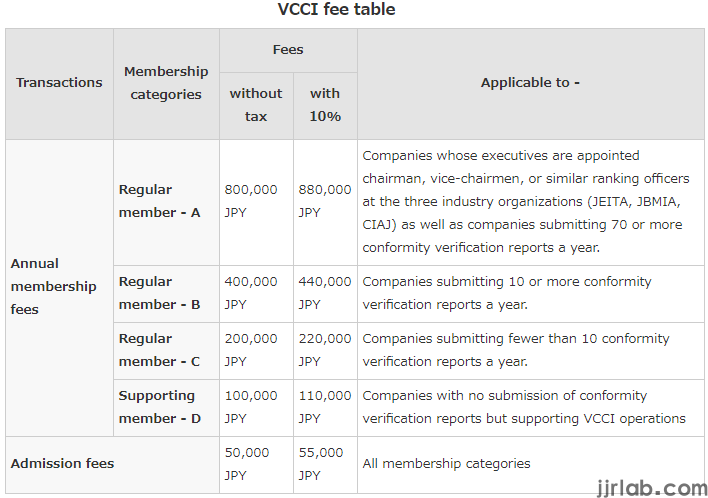
Email:hello@jjrlab.com






